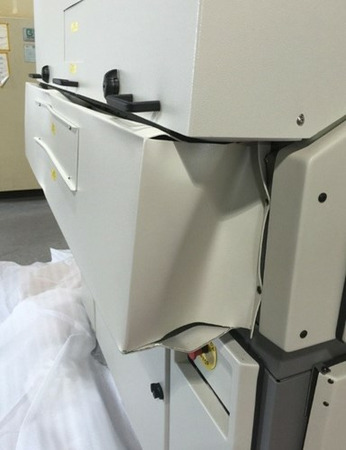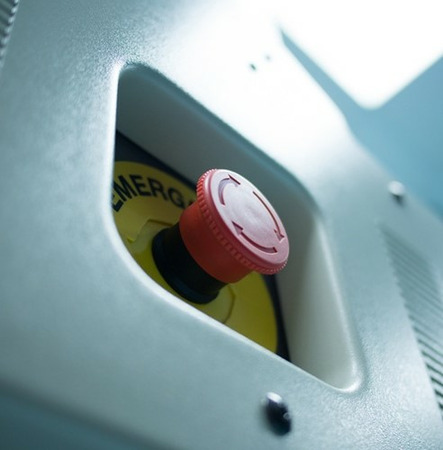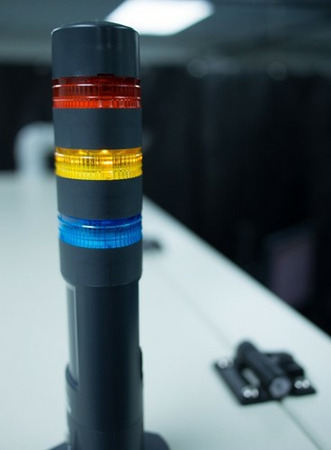How to Get Your New Flex System Installed and Processing Those First Runs
With your systems in place and your operators and process engineers fully trained, your team is now equipped to start developing and running production processes. However, it is common for questions to arise as you start operating the tool. Don’t hesitate to stay in touch with your supplier. Especially for those new to laser processing, questions are normal.
With your factory now prepared, let’s review the issues associated with getting your new system installed and running properly so that you can start processing your first runs.
Getting it there
As with any large piece of manufacturing equipment, just getting it onsite can be the first challenge. Your system supplier should be able to help coordinate transportation of the system to your facility. Working together with your supplier, your shipping/logistics partner and, if necessary, a local rigging company will ensure a smooth delivery and setup process.
The International Commercial Terms (Incoterms) associated with your system purchase will outline the tasks, costs and risks associated with the system’s shipment. It’s a document providing details regarding the location to which the system is being delivered and includes the point at which final transportation and any associated insurance become your responsibility.
Due to liability concerns, you will typically need to take responsibility for movement of the system once it reaches your facility. Unless you can provide your own in-house rigging, it is a good practice to stage the equipment at your local rigging company’s facility. This is especially beneficial if multiple systems are expected to arrive at different times. This will minimize the production interruptions typically associated with systems being repositioned on the production floor. Such off-site staging is also useful if you do not have an interim storage facility that meets the system storage environmental requirements. For instance, laser systems can become damaged as the result of being exposed to conditions such as high humidity and extreme temperatures or — even worse — being stored outdoors in pouring rain!

Figure 1. Poor handling during shipment can result in severe equipment damage
Once the system has arrived at your facility — and before moving the uncrated system into position on the production floor — it is wise, and often required as part of the supplier contract, to perform a thorough post-shipment inspection of both the crate and system before taking ownership; noting any damage and comparing the system’s condition with the pre-shipment inspection. Since poor handling of the equipment can also result in less-visible system damage to the sensitive optics, the laser, and other precision components, many equipment manufacturers will apply shock and tilt sensors to the shipping crates or the equipment itself in order to document the proper handling of the equipment in transit. If anything looks out of order — whether it be a tripped sensor or obvious physical damage — make sure to get photographic evidence and alert your supplier as soon as possible in order to sort out a recovery plan.
Final system uncrating and unpacking should be done in the presence of your supplier’s service team. In addition to inspecting the system for damage after uncrating, you should verify the presence and condition of the sealed environmental barrier bag that was used to prevent the contamination of the system’s optics during shipment.
After system uncrating, inspection, and subsequent move to the system’s ultimate operating location, system installation/commissioning will typically be performed by your supplier’s field service team. This will consist of placing and leveling the system and connecting it to the services that have been prepared for the system’s arrival. Electrical power, compressed air and vacuum services should have already been made accessible at the system’s ultimate location and those services should be consistent with the system’s site requirements.
System and site verification testing
After the system has been connected to the required facility services, your supplier will typically perform a thorough set of compliance, safety and diagnostic tests designed to verify that both the installation site and the system itself meet the agreed-upon requirements.
Site requirement compliance
These tests will ensure that the installation site complies with the system’s requirements as discussed in the Chapter 3 of this eBook. These verify environmental factors meet specifications such as temperature and humidity. They will also ensure the availability and quality of services such as vacuum, compressed air, etc.
Safety
At a minimum, safety tests will ensure that the system’s laser beam is safely confined to the processing area inside the system and is not escaping through any gaps in the system’s cabinet when the shrouds and doors are closed. They also ensure that safety interlocks are functional and trip at the appropriate time and that all Emergency Machine Off (EMO) buttons are operational.

Figure 2. A typical EMO button
Major subsystems
Verifies the proper functioning of subsystems such as computer, power supplies, sensors, debris removal, etc.
Laser and laser chiller
Verification of laser and chiller functionality, including laser power levels, chiller temperature stability and chiller coolant levels. This ensures that the laser will continue operating according to its specifications and avoids premature service interventions.
Optics quality and alignment
Laser spot quality and laser power transmission through the optics path can be affected by optics that may have become contaminated, damaged or misaligned during shipment. Given the importance of laser spot quality and spot size in high-quality via formation, verification of items such as optics alignment, beam diameters and laser spot quality is critical.
Motion/accuracy/kinematics
Verification of stages, galvanometers, and camera accuracy calibrations as well as motion and control loop functionality ensures that the process features will be placed accurately and formed correctly with precise beam positioning.
Laser power stability and control
Correctly calibrated and functioning power control ensures the best possible yields, especially for blind vias and other depth-limited processes on sensitive materials. At an absolute minimum, calibration of the system’s power measurement sensors against a certified, calibrated external power meter is required.
Other tests related to system laser power control and laser power stability further verify how much laser power variability your process engineers will have to build into their process development calculations.
Assuming these tests completed and no issues are documented, the system has met the supplier’s own system specification criteria. If demonstration applications had been developed by your supplier prior to the system sale, this is often a good time to verify that the applications show similar quality on the system that you are purchasing as compared to those previously seen in the demonstration results. After the completion of these tests, the system will typically be released for your use.
Training and safe tool operation
Now that the system is ready for use, how do you use it? At a minimum, your operators will require training related to basic tool operation. On-site operator training is typically offered by your supplier’s service or applications team, complementing a copy of the operator guide. These should cover safe operation of the tool, including laser, electrical, mechanical, chemical safety, functionality and the proper use of safety interlocks and EMOs. This should also involve an explanation of how the system shows that the interlocks are defeated — indicating dangerous Class 4 system status, rather than safe Class 1 operation.
Furthermore, system startup and shutdown should be covered, including how to put the laser into standby mode and understanding the time required for the laser to warm up and stabilize after returning from standby. A review of the operator interface — how to log in, how to initialize the system and process panels, how to start and stop jobs, and other production features — will similarly be covered in a typical training.
Beyond operator training, assuming you will not exclusively use the system for a single application for the life of the tool and have already been given the production process for that application, it is important to train your process engineer or process engineering team on the development of new processes. This is equally important if your team is new to laser processing or if you are switching from one laser supplier or system model to another.

Figure 3. Example of an LED light tower with operation status (red, yellow, blue) LEDs
Each system will have different operating characteristics and capabilities that impact the process, as well as different software functionality for process development. There will always be certain guidelines that can be followed for flex laser processing, some of which will be discussed in more detail in the next installment of this series. A typical applications training outline might include the following concepts:
Tool overview
How does the laser energy get from the laser output to the work piece? How is power controlled? How is the material kept flat and in place during processing? How does the debris removal mechanism work, how is it used, and what is its importance in consistent processes and optics lifetime?
Creating a laser drill file from a CAD file: How does one define alignment points, offset, rotation, and scaling methods? How does one set laser focus? How are process parameters and tooling motions (e.g. circles, spirals, punches, routs) added and modified?
Developing processes for blind and through vias, routing, and/or patterning: What are the available knobs to affect the process, such as tooling motions, laser power, laser repetition rate, process velocity, and laser focus? How does one best combine various tooling motions for any given process? How do blind and through processes differ, and what are the associated tradeoffs between throughput and quality/ yield? What is fluence, and how does it affect material removal? How does one ensure a high yield process with a robust process window?
For both operator and process engineer training, there are many important details to cover. Make sure that the personnel to be trained can fully focus on the training. At a minimum, they should be relieved of other engineering or production responsibilities during the training times, and ideally, distractions such as the use of mobile phones should not be allowed in the training room.
Posts adapted from "Stepping Up To Laser Processing for Flex" ebook authored by Patrick Riechel, Director of Product Marketing at MKS Instruments.
About the Author
Patrick Riechel is Director of Product Marketing for Flexible Circuit Micromachining tools at MKS Instuments. He has over ten years of experience in the design and manufacture of electronics, having held positions at Symbol Technologies, Motorola Solutions and MKS. Patrick has an MBA degree and a Master of Science in Systems Engineering from the Massachusetts Institute of Technology (MIT) as well as a Bachelor of Science of Electrical Engineering from Brown University. As the inventor of seven patents and the catalyst for bringing industrial head-worn computing to Motorola, he was the recipient of the Robert Noyce Fellowship at MIT for his contributions to the field of electronics.
 Ultra-High Velocity
Ultra-High Velocity